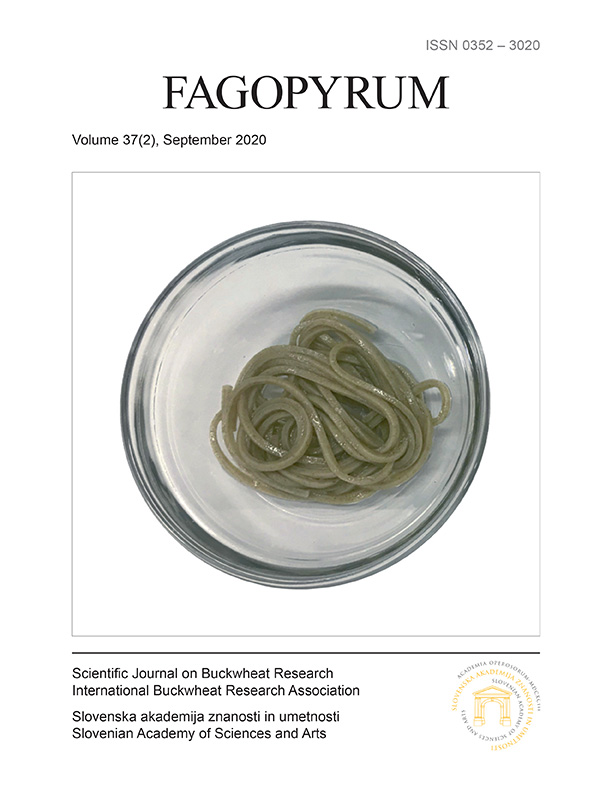Extraction of rutin and quercetin from Tartary buckwheat grains, hydrothermally treated at different temperatures
DOI:
https://doi.org/10.3986/fag0017Keywords:
Tartary buckwheat, rutin, quercetinAbstract
Tartary buckwheat grains were hydrothermally treated to establish the conditions under which rutin remains in the grain. Tartary buckwheat grains were soaked in water at the temperatures 51 °C, 61 °C, 70 °C, 75 °C, 80 °C, 85 °C, 90 °C, 93 °C, 97 °C and 99 °C, and a control group at 21 °C. During 20 minutes soaking at 51 °C or 61 °C the concentration of rutin decreased. This effect was mostly pronounced by soaking at 70 °C and 75 °C, where instead of missing amount of rutin, some quercetin appeared. After soaking at 80 °C, 85 °C, 90 °C, 93 °C, 97 °C and 99 °C concentration of rutin was not significantly different in comparison to the concentration of rutin after soaking 20 minutes at 21°C. It is suggested that exposure to water at 21°C is similar to natural conditions, where rutin degrading enzymes remain mainly inactive and in grain separated from its potential substrate. Further is suggested that at the soaking temperatures 51 °C, 61 °C, 70 °C and 75 °C, grain structures are partly degraded and rutin degrading enzymes got contact to the substrate. By soaking at 80 °C, 85 °C, 90 °C, 93 °C, 97 °C and 99 °C, rutin degrading enzymes lose their activity. Thus wet treatment of Tartary buckwheat grains for 20 minutes at temperature at 80 °C or above, this threshold is enough to preserve the content of rutin in the samples. This is of importance for nutritional quality of Tartary buckwheat food products.

